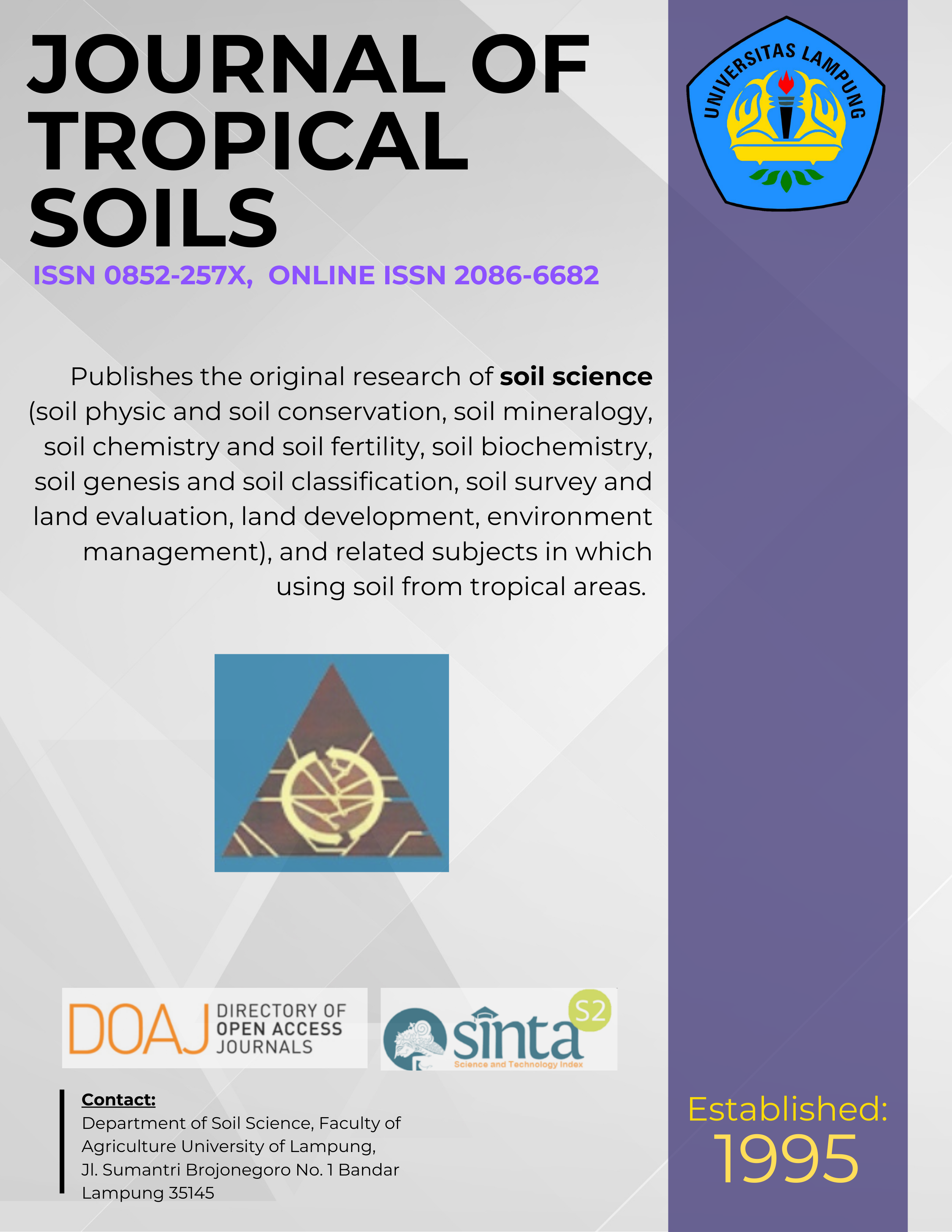Determination of Site-specific NPK Fertilizer Rates for Rice Grown on Tidal Lowland
Main Article Content
Abstract
This research aimed to determine site specific NPK fertilizer rates combined with rice straw compost application for rice grown on the tidal lowland. This research was conducted in a greenhouse in Indralaya, Ogan Ilir, South Sumatera in February until September 2017 using a factorial completely randomized design with two factors and three replications. The first factor was NPK fertilizer rate calculated based on the results of soil chemical analysis, consisting of five levels, namely 50% (D1), 75% (D2), 100% (D3), 125% (D4) and 150% (D5) of the site-specific fertilizer rate. The second factor was rice straw compost rate consisting of two levels, namely 5 Mg ha-1 (J1) and 10 Mg ha-1 (J2). The results showed that the application of 150% NPK rate and 10 Mg ha-1 rice straw compost resulted in the best effects on the rice growth grown on the tidal lowland. The application of those fertilizer doses produced the highest maximum number of tillers and productive tillers. In this regard the doses of NPK fertilizers that should be applied are 315 kg urea ha-1, 135 kg SP-36 ha-1 and 90 kg KCl ha-1.
Â
Downloads
Article Details
Section
License for Authors
Authors who publish with this journal agree to the following terms:
- Authors retain copyright and grant the journal right of first publication with the work simultaneously licensed under a Creative Commons Attribution License that allows others to share the work with an acknowledgement of the work's authorship and initial publication in this journal.
- Authors are able to enter into separate, additional contractual arrangements for the non-exclusive distribution of the journal's published version of the work (e.g., post it to an institutional repository or publish it in a book), with an acknowledgement of its initial publication in this journal.
- Authors are permitted and encouraged to post their work online (e.g., in institutional repositories or on their website) prior to and during the submission process, as it can lead to productive exchanges, as well as earlier and greater citation of published work (See The Effect of Open Access).
License for Regular Users
Other regular users who want to cite, distribute, remix, tweak, and build upon author’s works, even for commercial purposes, should acknowledge the work’s authorship and initial publication in this journal, licensed under a Creative Commons Attribution License.

